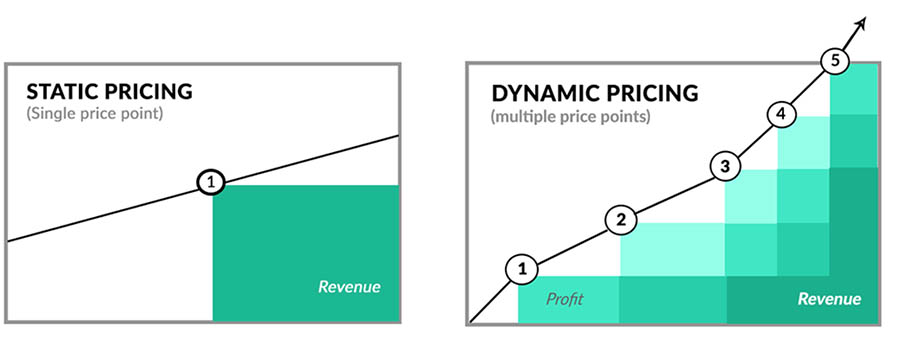
While this means you may sell fewer items, the higher price means that you still make a profit. With this information in hand, you can adjust prices so that they increase when traffic is high or in the leadup to particular holidays or events that trigger an increase in demand, and are reduced when traffic decreases or the event has passed. The inventory restricts the number of products that can be sold and website traffic data provides information on how demand changes over time. To start with, let’s consider an online retailer. While the travel, retail, and ecommerce industries are generally the first to be mentioned as successful users of dynamic pricing, companies with brick-and-mortar stores can benefit as well. Stochastic and price-sensitive demand customers choose products based on their willingness to pay.Industries where total market supply is restricted.

While it might feel easier to think of dynamic pricing and price optimisation as one and the same, they can differ in the information required to implement them and the situations where they work best.Ī dynamic pricing strategy works especially well in: Generally, this means that prices will increase when demand increases and will decrease or return to the original price when demand has dropped, with Uber’s famous “surge pricing” strategy as just one example. At its core, dynamic pricing strategies suggest small price changes in a temporal manner (and often in real-time) in response to changes in demand, inventory levels, or other market conditions. On the other hand, dynamic pricing can be thought of as a specific pricing strategy that comes under the umbrella of price optimisation. The optimal price will often maximise some measure of customer value - such as value-for-money - without sacrificing a company’s bottom-line, and can be tailored to suit the objectives a company wants to achieve. Generally speaking, price optimisation describes any pricing strategy that considers different factors when suggesting an optimal price or price range for a given scenario. While these terms are used a lot (and often interchangeably), distinguishing between them can lead to more useful conversations when it comes to deciding which pricing strategy you adopt. So, what’s the difference and why does it matter? Price Optimisation Versus Dynamic Pricing And, if you’re in the business of setting prices, dynamic pricing and price optimisation are probably terms that you’ve heard being tossed around. While deciding whether (and by how much) your prices change during spikes in demand, when sales plateau, or during unexpected events might seem trivial, it makes a significant difference in the long run.

Setting the optimal price is (and may always be) a challenge.


 0 kommentar(er)
0 kommentar(er)
